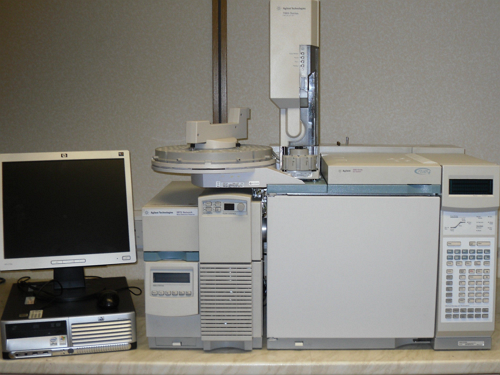Analysis of Stearic Acid
Stearic acid (octadecanoic acid/C18:0) is a long-chain saturated fatty acid of 18 carbon atoms.
Generally, it is abundant in animal fats than in vegetable oils. However, mango seed oil contains an extraordinary level
of stearic acid followed by shea butter and cocoa butter.
Many microalgal species are abundant producers of stearic acid. It is possible to improve the stearic acid content of microalgal species by modifying culture conditions.
Seaweeds contain a low level of stearic acid that ranges around 1-4% of the total fatty acid composition.
Genetic engineering strategies can increase the biosynthesis of saturated fatty acids, including stearic acid, by oleaginous yeasts.
Stearic acid is one of the most commercially significant oleochemicals. Functionally, Stearic acid serves as an emollient, lubricating agent or emulsion stabilizer. In addition, salts or esters of stearic acid can act as a surfactant. As a result, stearic acid and its derivatives are ubiquitous in skincare products. Additionally, they are used to formulate detergents, pharmaceutical drugs, paint and varnishes, lubricants, and other commercial products.
Many microalgal species are abundant producers of stearic acid. It is possible to improve the stearic acid content of microalgal species by modifying culture conditions.
Seaweeds contain a low level of stearic acid that ranges around 1-4% of the total fatty acid composition.
Genetic engineering strategies can increase the biosynthesis of saturated fatty acids, including stearic acid, by oleaginous yeasts.
Stearic acid is one of the most commercially significant oleochemicals. Functionally, Stearic acid serves as an emollient, lubricating agent or emulsion stabilizer. In addition, salts or esters of stearic acid can act as a surfactant. As a result, stearic acid and its derivatives are ubiquitous in skincare products. Additionally, they are used to formulate detergents, pharmaceutical drugs, paint and varnishes, lubricants, and other commercial products.
Click here to place an order for determining Stearic Acid.
Request a QuoteStearic Acid Content
Analysis Packages for Stearic Acid
Equipment Used for Stearic Acid Analysis

Gas Chromatograph with Mass Spectrometer (GC-MS)
Our lab has an Agilent 6890 gas chromatograph (GC) coupled to an Agilent 5973 mass selective detector (Mass Spectrometer).
Additional Material
We can determine the Stearic Acid content of biomass, click here to learn more about our various biomass analysis methods.
We can determine the Stearic Acid content of seaweed, click here to learn more about our various methods for analysing seaweed.
We can determine the Stearic Acid content of microalgae, click here to learn more about our various methods for analysing algae.
We can determine the Stearic Acid content of seaweed, click here to learn more about our various methods for analysing seaweed.
We can determine the Stearic Acid content of microalgae, click here to learn more about our various methods for analysing algae.




